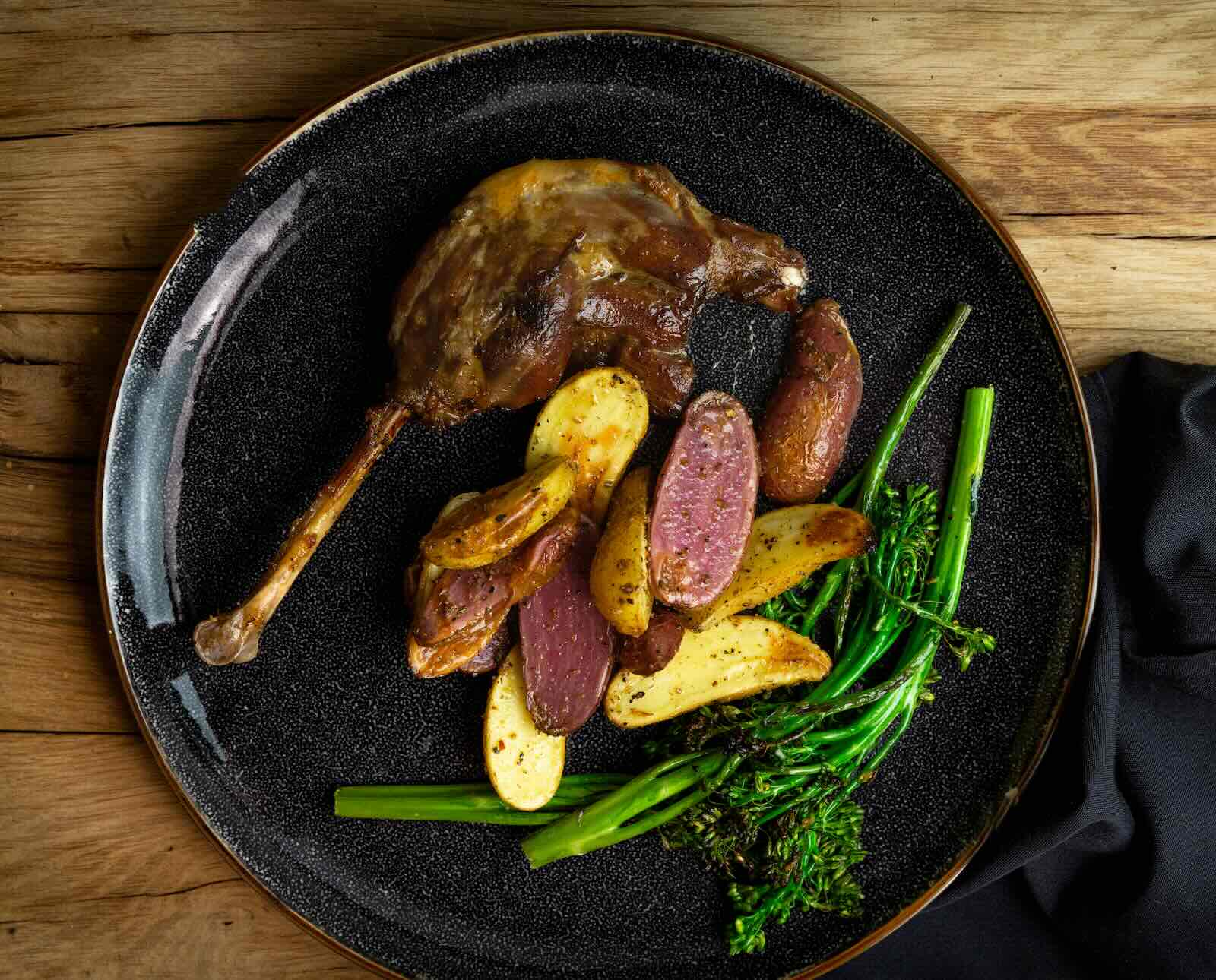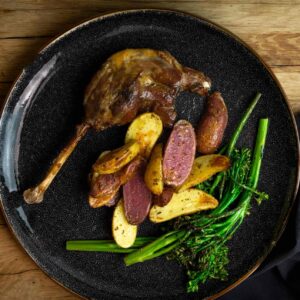
Jack Hennessy grew up in the South Suburbs of Chicago…
Cook succulent Canada goose legs in seasoned duck fat and take your tastebuds to France
Duck confit is a gourmet dish often found in high-end French restaurants. Legs are the most common cut of meat to make confit with. Making it isn’t necessarily labor intensive, but it does require planning ahead. Curing and cooking the waterfowl requires several hours of your time.
This particular recipe uses Canada goose legs, but you can indeed use legs from smaller waterfowl. Using smaller legs will shorten the curing and cooking times. Yes, you could even use breasts from any waterfowl but similar to using smaller legs, the cure and cook times will vary.
Rendering your own duck fat and preserving to use later is always a great idea. There are several articles and videos on the internet that cover how to do so. However, in a pinch, you can purchase duck fat at many grocers or through Amazon, though the cost is approximately $1 an ounce. To make this recipe—if you don’t have canned duck fat or duck butts in your freezer—you’ll spend $28 on duck fat right off the bat.
Is this recipe worth the cost of duck fat plus the cost of the other ingredients? Very much so. Dare to take it a step further and splurge on a nice bottle of wine. What wine should you pair confit with? Now, that’s a question for a sommelier.

Canada Goose Confit
Ingredients
- 2-4 Canada goose legs
- Kosher salt
- 28 oz duck fat
- 4-8 tbsp salted butter
- 2 shallots sliced
- 2 tsp garlic freshly minced
- 2 tsp ginger freshly minced
- 5-8 star anise
- 5-8 whole cloves
- 4-6 cinnamon sticks
- 2 tbsp coriander seeds whole
- 2 tbsp black peppercorns whole
- 2 sprigs fresh thyme
- 2 sprigs fresh rosemary
- Orange zest from 2 medium oranges
Instructions
- Lightly salt all sides of the goose legs and leave them in the fridge for 12 to 16 hours. If you use legs from smaller waterfowl, such as mallards, 8 hours of curing in the fridge will suffice.
- After the meat has cured, heat a thin layer of duck fat over medium heat in a skillet large enough to hold the legs. When hot, sear both sides of the legs, then set aside. Add a bit more duck fat, if necessary, followed by sliced shallot. Once shallot is slightly soft and seared, add the garlic and ginger, stir for a few minutes, then turn the heat to medium-low.
- Add at least 14 ounces of duck fat and 4 tablespoons of salted butter to the skillet and allow them to melt.
- Add the star anise, cloves, cinnamon sticks, coriander seeds, peppercorns, thyme, rosemary, and orange zest, and simmer at 200 F for 5-10 minutes to imbue the fat with flavor.
- Add the goose legs and more duck fat. The liquid fat should cover at least half the goose legs, from bottom to top. Simmer on the stovetop, not in the oven, for at least 6 hours and up to 8 hours. Flip the legs every half hour, and ensure the fat covers half the legs at all times. Add more fat if necessary. Ideally, the temperature of the fat should stay around 200 F.
- The legs are done when the meat is tender. Test the meat for tenderness by touching it with your finger. There should be a bit of give, versus feeling like a rock, and the meat should feel ready to fall off the bone.
- Remove when the meat is done. Serve immediately and enjoy with a side of roasted potatoes or steamed vegetables.
Nutrition
Jack Hennessy grew up in the South Suburbs of Chicago and didn't start hunting until he attended graduate school in Spokane, Washington, at the age of 26. Hennessy began work in professional kitchens in high school but didn't start writing wild game recipes until he joined the Spokesman-Review in 2014. Since then, his recipes have appeared with Petersen's Hunting, Backcountry Journal, Gun Dog Magazine, among many others. He now lives with his Wirehaired Vizsla, Dudley, in Wichita, Kansas.



